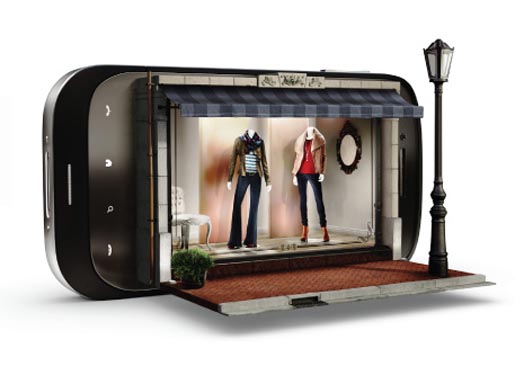
By Tom Deutsch, VP Creative Services at InteractOne
Visual Merchandising is not a new term among retailers. Have you seen an episode of PBS’s Mr. Selfridge? Based in the early 1900’s, the show spends a lot of air time showcasing Selfridge’s cutting edge merchandising innovations.

In today’s retail world, visual merchandising still plays a critical role in overall sales. Trained merchandisers (the folks “behind the curtain” strategically placing items and watching how customers shop) have product placement down to a science.
Retail merchandisers focus on store themes, overall coherence, interior design, lighting, store layout, displays, colors, and that’s just the physical part. There are scores of people also trained in the Psychology of retail shopping.
For example, watch this quick video interviewing Ken Nisch, a retail design expert on his store design with North Face.
The take-away here is that there are trained and experienced people designing and strategically planning the beautiful stimulating brick and mortar stores. Why are we not actively applying their methods to our eCommerce stores?
In the eCommerce world, merchandising has largely been ignored.
Lost somewhere between early innovators of the first decade out to reinvent the world of business and the initial reluctance of many old-school retailers to embrace online selling, merchandising fell to the wayside.
For a lot of online retailers the defacto merchandisers are marketers, designers, and product planners. This leads to haphazard product presentation and grouping for the simple elements of a promotion, not to mention an annoying chore arising out of Magento’s “related products” feature.

E-tailers who utilize merchandising professionals benefit from a shift away from the practical and toward the strategic.
With eMerchandising, merchants move beyond standard A/B testing and analytic research to increase conversion rate optimization. Not that there’s anything wrong with A/B testing and analytic research, but most retailers don’t have optimized processes in place, nor do they have the amount of traffic needed to take a purely data-driven approach to product planning and store design.
Site analytics can tell you a tremendous amount, but they can’t make decisions.
The “human” element, as applied by a merchandising professional, does not simply rely on intuition, opinion or habit. Instead of only relying on analytics, merchandisers will consider product mix, customer profiles, competitive pricing and customer behavior- on a strategic level – in making tactical decisions about design and user interface (UI). Those merchandising decisions can then be tested and optimized for a much higher conversion rate.
The Customer Connection
In the gradual process of business maturation and rediscovering merchandising, eCommerce has brought the practice closer to the customer. Forward thinking eCommerce merchandising includes creative, in-depth content, easy to navigate pages and inventive interactive customer interaction through videos and state of the art photography.
Magento merchants especially have a strong merchandising advantage built in the platform’s uber-flexible product categories, attributes and configurable products. Time to put them to use!
Learn more about InteractOne’s Merchandising 360 Analysis
Think you may need some merchandising help?